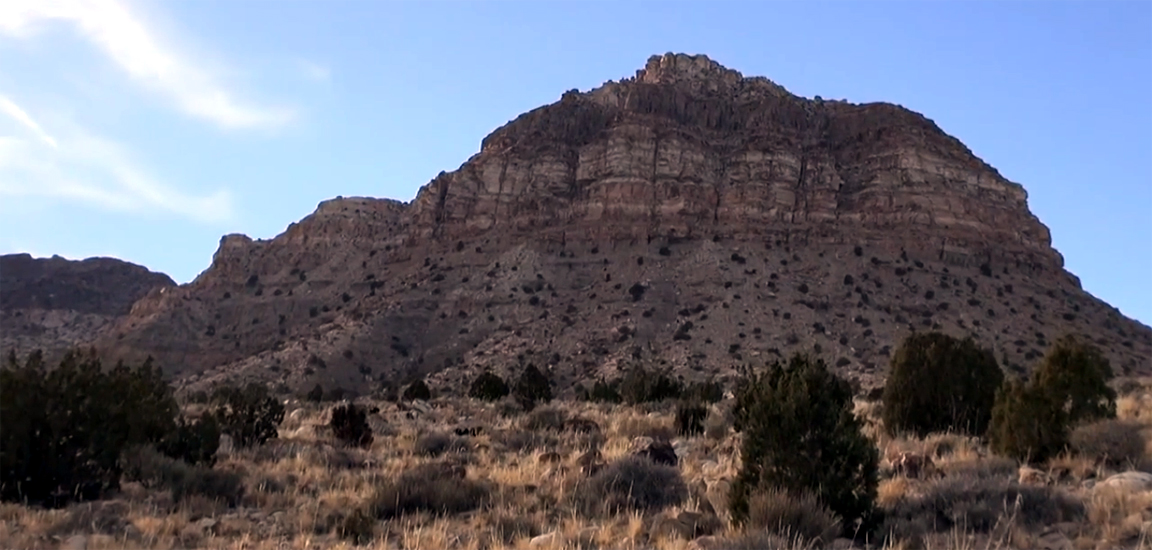
|
Here is world-famous Fossil Mountain, Millard County, Utah, a profoundly important paleontological protuberance in the Great Basin Desert that exposes one of the great early Ordovician fossil-bearing rock sequences on the planet--a wildly fossiliferous accumulation of sedimentary material paleontologists and geologists alike call the Pogonip Group. This is a widespread association of six distinct rock formations roughly 485 to 470 million years old comprised of, in ascending order of geologic age (that is, oldest to youngest): the House Limestone; Fillmore Formation; Wah Wah Limestone; Juab Limestone; Kanosh Shale; and Lehman Limestone. Each Pogonip Group formational subunit yields unique suites of abundant invertebrate fossil specimens: trilobites, ostracods (bivalved crustacean), sponges, brachiopods, gastropods, pelecypods, cephalopods, graptolites, conodonts, echinoderms, corals, and bryozoans, primarily, that often form shell beds composed of nothing but a single variety of fossil organism; for example, the Kanosh Shale is justifiably famous for its thick shell beds containing the prolific remains of a single species of brachiopod, called scientifically Shoshonorthis michaelis. Other beds produce abundant ostracods, gastropods, trilobites, or echinoderms, to the exclusion of all of other invertebrate animal types. Fossil Mountain in Millard County, Utah, could well yield the most diverse lower Ordovician fossil sequence in North America. Although the House Limestone and Fillmore Formation do not occur at Fossil Mountain, proper, their abundantly fossiliferous limestones and shales can be examined at outcrops situated in the immediate vicinity of Fossil Mountain. Within the photograph, juniper trees along foreground to the base of Fossil Mountain grow atop the lower Ordovician Juab Limestone. Lowest erosion dissected slopes belong to the fabulous lower Ordovician Kanosh Shale, the most richly fossil-bearing member of the Pogonip Group. Directly above the Kanosh, at the first major erosion-resistant ledge along the cliff face, is the Lehman Limestone. Massive alternating brown and white rocks in the bold cliff above belong to the middle Ordovician Watson Ranch Quartzite. Uniformly darker band just below peak is the middle Ordovician Crystal Peak Dolomite. And capping Fossil Mountain is the lighter-colored, whitish, middle Ordovician Eureka Quartzite. A still picture I cropped and processed through photoshop from a YouTube video lecture by Owen Nielsen of Great Basin Museum, published on July 31, 2014. |